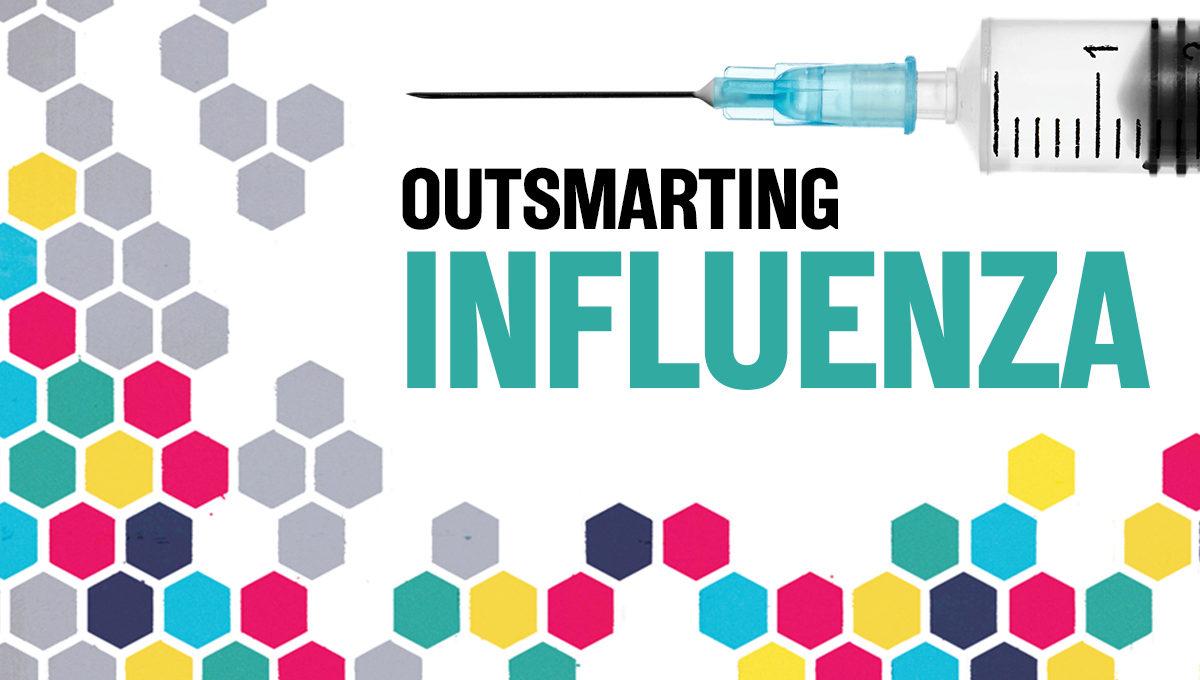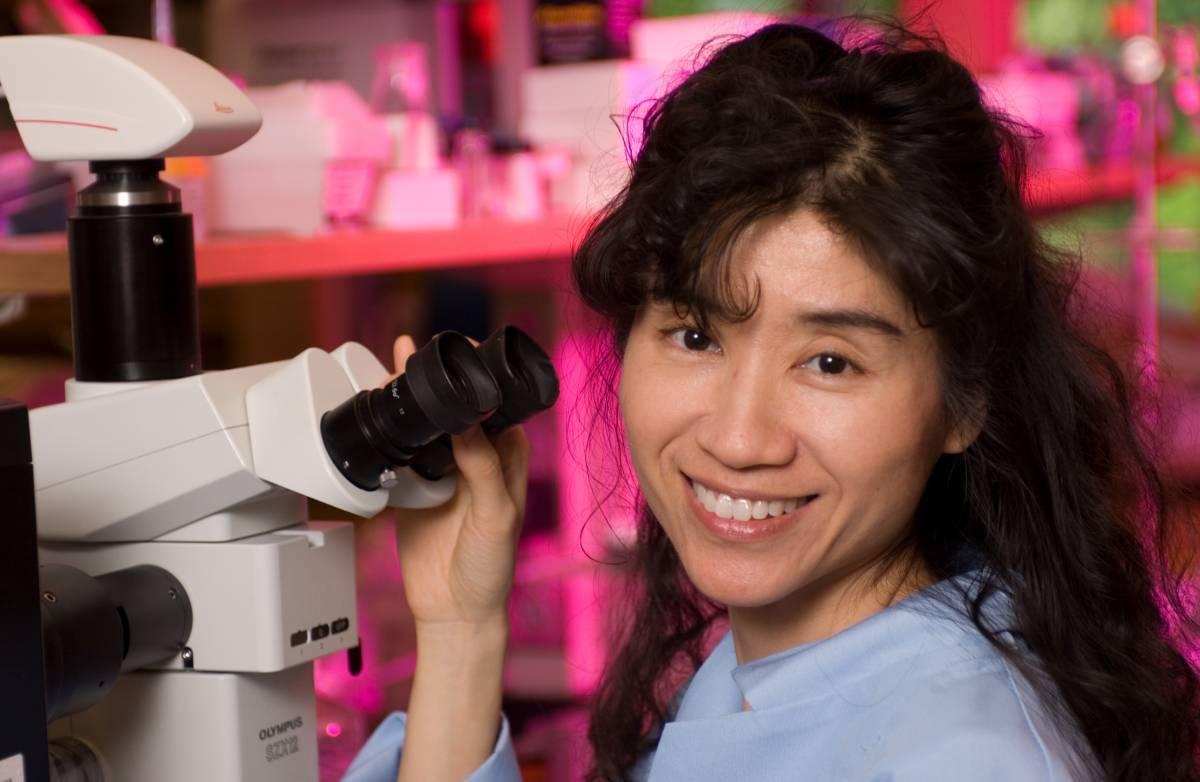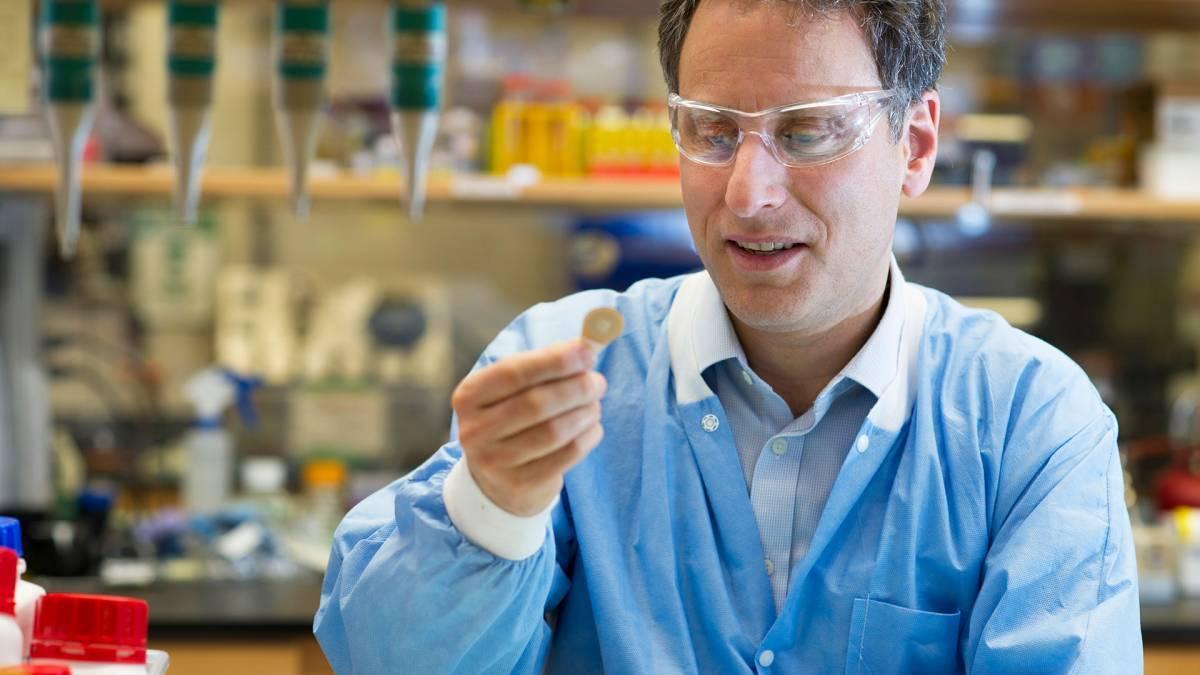Engineers are developing unconventional tactics to vanquish the flu virus.

The 2017-18 flu season was a rough one everywhere, and Georgia was no exception. Local health officials called it the worst outbreak in decades. If you didn’t get sick, you probably know someone who did — and that unlucky person likely battled aches, coughing and fever.
While most flu sufferers get by with bed rest and chicken soup, others are hit much harder. According to the Georgia Department of Public Health, more than 3,100 people in metro Atlanta were hospitalized with the flu this past season. Flu complications can even be fatal, killing 12,000 to 56,000 people annually in the U.S. alone.
Finding new ways to fight the flu is a top priority for researchers around the world, and Georgia Tech’s College of Engineering is very much in the game. Here are two unconventional ways Georgia Tech engineers are tackling the challenge.

Immunobiology Insights from Machine Learning
Engineering a better flu vaccine might seem like a job best left to a biologist. But Eva Lee, professor in the H. Milton Stewart School of Industrial and Systems Engineering, is proving that mathematicians can play a crucial role — and in her case, shape a new paradigm for developing vaccines.
Using a powerful machine learning approach that she pioneered, Lee found a way for scientists to determine how effective a vaccine is shortly after it’s administered. Typically, it takes about four weeks to know whether a vaccine will create a strong enough immune response to protect a patient from the flu. But Lee’s method reduced that time to just three days.
Here’s how: In two major studies, biomedical researchers collected blood samples from people who received a flu shot. To chart participants’ immunity over time, the scientists measured the level of flu antibodies produced in response to the vaccine. Lee analyzed this data using a highly sophisticated machine learning program she developed, called DAMIP. The program allowed her to tease out correlations that had never been seen before.
Her analysis revealed the presence of certain biomarkers in the vaccinated patients who later developed immunity, i.e., particular genes in white blood cells that get ‘turned on’ as the body prepares to manufacture antibodies. Because the emergence of these biomarkers happens quickly, Lee could offer a much earlier picture of the vaccine’s effectiveness.
The flu studies that Lee participated in were especially useful because they took place over multiple flu seasons. Biologists could apply Lee’s predictions about the biomarkers to participants in later seasons and test how accurate they were. Using the genetic signatures she identified, the researchers could predict — with 90 percent accuracy — whether the flu vaccine would be effective for a specific individual just three days after that person received the vaccination.
“When I identified those genes, they had not been identified by any biologist in the past,” Lee says. “They validated the results in the lab, which were stunning.” Previously, researchers could measure the levels of flu antibodies a few weeks or a month after a patient receives a trial vaccine, indicating whether it worked or not. But Lee’s findings illuminate the mechanisms underlying these responses — not just whether it worked, but why.
“The significance is that we identified predictors that are common across multiple years of vaccines,” Lee says. The new insights could help researchers design a vaccine that provides immunity from more flu strains, she adds.
Lee’s work brought another benefit. Identifying the effectiveness of a vaccine within three days, instead of a month or longer, would greatly accelerate vaccine development. In an environment where developing and testing a new vaccine can take many years, any innovations that speed the process are welcome.
Lee’s research also signifies a step toward a universal flu vaccine, a one-time immunization that provides long-term protection. The influenza virus is always changing, and it’s not easy to confer immunity to a virus that technically doesn’t yet exist. But work like Lee’s could help counter this unpredictability by identifying common signatures across multiple flu strands, as well as patient populations.

The Painless Shot
Developing the most effective flu vaccine possible is only one part of the puzzle. Because no vaccine is effective if you never receive it.
Right now, only four in 10 U.S. adults get their flu shot each year. Some never find the time to visit the doctor or local pharmacy; others are simply afraid of needles. Worldwide, the flu vaccine is unaffordable or inaccessible in many places, worsening the likelihood of the global pandemic that health experts fear.
So what if you could receive the vaccine without having to get a traditional flu shot? That’s the question Mark Prausnitz has been pursuing — and it looks like he’s found an answer.
The Georgia Tech Regents professor of chemical and biomolecular engineering created a peel-and-stick microneedle patch that painlessly delivers a vaccine with the ease of applying a Band-Aid. Granted, “microneedles” may not sound like something you’d be eager to encounter, but these microneedles are tiny spikes measured in microns. They’re smaller than a millimeter — more like a few stacked grains of salt. At this size, they don’t penetrate deeply enough to reach the nerves, so they don’t cause any pain.
The process of creating a strong, minuscule needle out of water-soluble polymers is pretty high-tech. Prausnitz’s lab uses state-of-the-art micro-fabrication equipment to craft the perfect prototype in the shape of the desired patch. “We had to spend a lot of time and effort making this master structure in the shape of the needle we want,” Prausnitz says. From there, they created an inverse silicon mold, sort of like the world’s tiniest ice cube tray. They pour the vaccine mixture into this mold, where it hardens and dries. The mold can be used again and again.
Prausnitz’s team has collaborated closely with researchers at Emory University to test the microneedle patch flu vaccine. In a Phase I clinical trial that concluded last year, the flu vaccine patch was shown to be safe and effective, with no difference in measured immunity between the patients who received the patch from a professional and the ones who administered it to themselves. More than 70 percent said they preferred it to the traditional flu shot.
Because the main purpose of a Phase I trial is to verify safety, the participants were all healthy adults. Next, the researchers will test the microneedle patch’s effectiveness with more participants, including people more at risk for severe flu complications.
The patch has advantages beyond being painless, especially in areas around the world where healthcare infrastructure is lacking. Because the vaccine is delivered in a dry state instead of the usual liquid, it doesn’t require refrigeration and thus has a longer shelf life. And because the water-soluble microneedles dissolve directly into the skin, there’s no biohazardous “sharps waste” to manage.
Could the microneedle patch help with a universal flu vaccine? Maybe.
“A universal flu vaccine is really challenging, and there’s a lot of people working on it. There’s not going to be a simple solution; it will require a collection of approaches,” says Prausnitz. But delivering the vaccine to the skin instead of the muscle appears to create a broader immune response, meaning the body produces a more diverse selection of antibodies — which might mean immunity to a wider variety of flu strains. More research is needed to test this possibility.
Exactly a century ago, the deadly 1918 Flu Pandemic swept the globe, sickening around a third of the world’s population and claiming an estimated 50 million lives. Since then, public health officials have worked hard to prevent a recurrence.
But the fast-mutating flu virus remains an ever-present threat. Experts say the next pandemic could strike at any time. When it does, the innovations of engineers like Eva Lee and Mark Prausnitz will give us the vaccination arsenal we need to strike back.